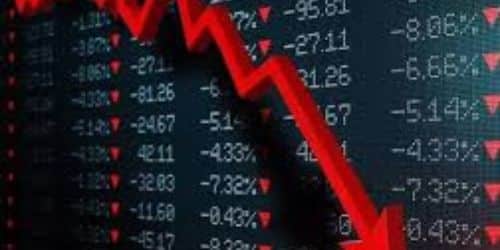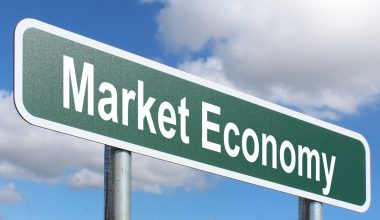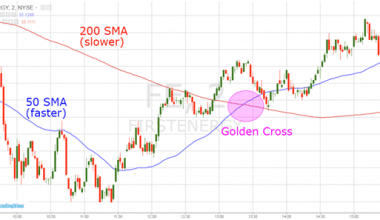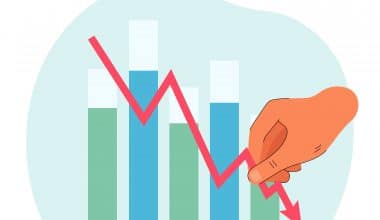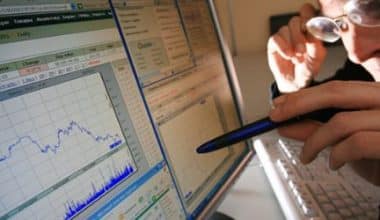Due to the pandemic and the war in Ukraine, which caused significant supply interruptions, food and energy prices have recently risen to nearly historic highs. This was accompanied by a substantial increase in commodity price volatility as well. Unfortunately, the fluctuating commodity prices will probably present economic difficulties in the years to come. However, this post constitutes the price volatility of stock, oil, crypto, and option.
Sit and enjoy the reading!!!
Price Volatility
Perhaps the most significant factor in evaluating futures trading is price volatility. It explains the fundamental economic basis for futures trading to protect the hedger from unfavorable price swings. If a commodity’s price remained stable, a futures market wouldn’t be needed. Price volatility is required to draw speculators’ risk capital and ensure there is enough liquidity to support the market.
Additionally, analytics experts like ArrowHead can help investors and companies assess the price volatility of stock, crypto, and options. Investors can make informed decisions in dynamic and unpredictable markets by understanding historical price movements and identifying patterns indicative of future market behavior.
Measuring Price Volatility
There are two kinds of price volatility that are employed in option pricing:
- Historical volatility
- Implied volatility
Historical volatility is the price range over a given time period. Implied volatility is the future price range expected to trade. Option premiums are entered into an option pricing model to determine implied values. It is crucial to consider both when determining the right volatility to employ for figuring out option premiums.
We can observe how prices have performed under a set of market conditions by looking at historical volatility. From this, we might be able to develop a level of confidence that will aid us in determining how predictable the current market conditions are.
We may see the market’s expectation of the expected trading range of prices for a certain period by looking at implied volatility. Implied rates fluctuate continuously to reflect what the market thinks. A powerful technique for analyzing price risk is implied volatility. It enables us to calculate the effect that prices will have, given a certain likelihood, on our assets.
How Does Volatility Affect Consumers?
Consumers’ experiences with pricing fluctuation vary depending on their general service requirements and buying habits. Compared to commercial and industrial users, prices for residential customers are typically significantly more constant. Monthly average costs are included in residential customers’ bills, reducing price volatility. Also, participating in annual budget plans offered by local gas distribution companies reduces monthly costs for many home clients.
State agencies regulate most residential prices, which reduces market effects. Hence, large-volume clients like power plants sometimes use short-term market purchases or agreements without fixed price terms. These consumers are willing to risk price volatility for cost savings and fuel flexibility.
What Causes Volatility In Natural Gas Prices?
Market volatility for gas is mostly influenced by:
- Weather Variations: The short-term demand is strongly influenced by the weather. The quantity of natural gas that end customers use can fluctuate due to sudden, protracted, or severe weather changes. The amount of natural gas that is accessible to end customers can change depending on the weather, which can also have an impact on supply and distribution capacities.
- Production/Imports: The majority of the natural gas supply that is available for consumption is made up of natural gas that is produced and imported. Prices can be significantly impacted by changes in the amount of gas produced or imported.
- Storage Levels: Since they buffer demand and supply, natural gas storage levels are often used to assess supply and demand. Gas market players may compare current storage levels with existing or anticipated demand because storage is needed during high demand.
- Delivery Constraints: The pipeline delivery system may have restrictions, which could affect supply and distribution and natural gas availability. Moreover, production valves freezing, equipment malfunctioning, pipeline or supply bottlenecks, or adding transmission lines are examples.
- Market Information: When market players are compelled to base their trading decisions on rumors and speculation because they lack timely, accurate information about the reasons for volatility previously outlined, prices may change.
Stock Price Volatility
The degree to which the value of the stock market as a whole goes up and down is measured by its volatility price. Additionally to the market as a whole, specific equities can also be regarded as volatile. More specifically, the amount by which an asset’s price deviates from its average price can be used to determine volatility. The statistical metric that is frequently used to represent volatility is the standard deviation.
When unknown external events occur, stock market volatility may increase. For instance, during the early stages of the COVID-19 pandemic, the major market indices consistently climbed and plummeted by more than 5% per day, although generally not fluctuating by more than 1% in a single day. Because no one knew what would happen, there was frenzied buying and selling. More volatile stocks exist than others. A blue-chip company’s stock may not experience many significant price changes, whereas a high-flying tech stock may. The tech stock is thought to have high volatility, while the blue-chip stock is thought to have moderate volatility. There is a range of volatility called medium.
Measuring Stock Price Volatility
The volatility of individual equities is frequently represented by a statistic known as beta. The historical volatility of a stock in relation to the S&P 500 index is measured by its beta price. When a stock’s beta value exceeds 1, it has historically seen greater volatility than the S&P 500. For instance, if the S&P gains by 1%, a stock with a beta of 1.2 may rise by an average of 1.2%. A stock is considered to be less reactive to broad market movements if its beta value is smaller than one, on the other hand. Finally, a negative beta (which is extremely uncommon) informs investors that a company has the propensity to move counter to the direction of the S&P 500.
The Chicago Board Options Exchange (CBOE) Volatility Index, also known as the VIX, is a gauge of the anticipated volatility during the upcoming 30 days for the whole stock market price. The actual calculation of the VIX is fairly complicated, and the value itself isn’t all that significant. Investors should be aware, though, that the VIX is frequently referred to as the market’s “fear gauge.” Investors may be concerned about substantial stock volatility price fluctuations in the next days and weeks if the VIX climbs significantly.
Oil Price Volatility
Events that have the potential to obstruct the flow of oil and petroleum products to market, such as geopolitical and weather-related occurrences, can have an impact on the prices of both crude oil and petroleum products. These kinds of occurrences may result in actual disruptions or breed concern over future supply or demand, which can increase price volatility. The low responsiveness or “inelasticity” of both supply and demand to price fluctuations in the short run is intrinsically linked to the volatility of oil prices.
In the near future, the capacity for oil production and the machinery that relies mostly on petroleum products for energy are both rather set. In the short term, when prices rise, it is very difficult for consumers to convert to alternative fuels or boost fuel efficiency because it takes years to establish new supply sources or vary production. Also, in these circumstances, a significant price change may be required to restore physical supply and demand after a shock to the system.
A large portion of the world’s crude oil is found in areas that have historically experienced political unrest or had their oil production interrupted by political events. The Arab Oil Embargo in 1973–74, the Iranian revolution and Iran–Iraq War in the late 1970s and early 1980s, and the Persian Gulf War in 1990 are three big oil price volatility that coincided with supply disruptions brought on by political events.
Crypto Price Volatility
The majority of market watchers of cryptocurrencies will concur that crypto price volatility is in an entirely other league. There are no indexes to measure the volatility of crypto price, but you only need to look at past price charts to observe that compared to prices of assets in traditional markets, cryptocurrency prices experience more rapid and dramatic peaks and troughs. Many of the same factors that cause price volatility in traditional markets also apply to crypto. Price fluctuations in both the crypto and traditional markets are driven by news developments and speculative activity.
But because crypto markets lack a strong ecosystem of institutional investors and big trading businesses, their impact is exacerbated in crypto markets, which have less liquidity than traditional financial markets. Because they both feed off of one another, increased volatility and a lack of liquidity can result in dangerous situations. Most cryptocurrencies, aside from bitcoin, lack well-established and regularly used derivatives markets. The crypto price occasionally displays healthy volatility similar to that seen in traditional markets under the influence of day traders and speculators.
However, there are indications that the volatility in the cryptocurrency markets is abating. A cryptocurrency derivatives market is also starting to take shape as part of the growth and expansion of the larger crypto market ecosystem, as institutional investors and trading companies start to embrace the asset class with more conviction. It is still unclear whether volatility in crypto price will eventually resemble volatility patterns seen in traditional markets. But as the asset class grows and develops, it will probably continue to frequently display excessive volatility until it eventually reaches full maturity.
Option Price Volatility
The term “premium” is frequently used to describe an option’s cost. The buyer pays the premium to the option seller (also known as the writer) in exchange for receiving the above-described right to buy (or sell). The buyer has two options: they can either use the option or let it expire worthless. The seller keeps the premium regardless of whether the option is exercised because the buyer still pays it. As a result, the cost of the option is determined by the likelihood that the buyer will be able to exercise it profitably.
Volatility is one of several elements that influence options price, and we’ll examine it below. The underlying asset’s price, the strike price, the remaining time before expiration, dividends (if any), and interest rates are among the factors.
Implied Option Price Volatility
The market price changes of the underlying asset are referred to as volatility. It is a gauge of how quickly and significantly underlying asset prices shift. Investors can better understand why option prices react in certain ways by being aware of volatility.
The most important types of volatility for option pricing are two of them. Implied volatility (IV), a notion unique to options, is a forecast by market players of how much underlying securities will fluctuate in the future. The price of an asset as it trades is effectively estimated in real-time by implied volatility. Using algorithms that gauge expectations in the option market, provides the anticipated volatility of an option’s underlying asset during the course of the option. Implied volatility typically rises during downtrends in the options markets. In contrast, implied volatility typically decreases during market uptrends. Higher implied volatility suggests that future option price movement is anticipated to be more significant.
Historical volatility (HV), usually referred to as statistical volatility, is another type of volatility that impacts options. This gauges how quickly the prices of underlying assets fluctuate over a specific time frame. Although historical volatility is frequently measured annually, it can also be computed daily and for shorter time periods because it is a dynamic quantity. Investors should be aware of the time frame for which the historical volatility of an option is determined. The value of an option is often higher when the historical volatility % is higher.
Volatility’s Effect on Options Prices
- All options on that underlying, including calls and put at all strike prices, tend to cost more as volatility rises. This is due to an increase in the likelihood that all options will be profitable.
- The deltas of all options, including calls and puts, at all strike prices, approach 0.50 as volatility rises. As a result, in-the-money option deltas move closer to 50 while out-of-the-money (OTM) option deltas increase.
- The pricing of at-the-money (ATM) options for a certain expiration and longer-dated options, in general, are especially susceptible to variations in volatility.
How Do You Analyze Price Volatility?
The most frequent approach to gauge market volatility is standard deviation, and traders can use Bollinger Bands to examine standard deviation.
Analyzing price volatility involves utilizing a combination of standard statistical measures, charting platforms, algorithmic trading tools, financial news aggregators, sentiment analysis, and machine learning techniques. The choice of tools depends on the trader’s preferences, strategies, and the complexity of the analysis required.
What Are the Factors Affecting Price Volatility?
Given that supply and demand determine price, volatility must be a product of the market’s fundamental supply and demand dynamics. Economic indicators can significantly impact market sentiment. Changes in interest rates, determined by central bank decisions, play a crucial role in shaping market dynamics, affecting borrowing costs, investment decisions, and currency values.
Geopolitical events create uncertainty and influence market reactions. Corporate earnings reports and announcements impact individual companies’ stock prices, contributing to overall market volatility. Investor sentiment, shaped by news, social media, and market perception, can lead to rapid and unpredictable price swings.
What Are the Three Types of Volatility?
Three different types of volatility can be calculated: historical, implied, and future-realized volatility.
Historical volatility, assessed through the standard deviation of an asset’s past data, offers insights into typical price variability and aids in predicting future movements. Implied volatility, derived from options pricing models, reflects market expectations for future price fluctuations and influences option premiums.
On the other hand, future-realized volatility, a speculative estimate of actual future volatility, assists investors in anticipating potential market movements, despite the inherent uncertainty in predicting future volatility.
How Do You Trade Price Volatility?
Two strategies exist for trading volatility. First, you can trade an instrument that measures volatility, like the VIX. Second, you can look for volatility in regular markets, when traders try to profit from quick and profitable market changes.
What Reduces Price Volatility?
Even if prices are falling, resurgent commodity market volatility is likely to create economic difficulties in the years to come.
What Is the Formula for Price Volatility?
It is determined by multiplying the standard deviation by the square root of the total number of time periods, T.
Related Posts
- Understanding the difference between Stocks and Forex
- Implied Volatility Options; How to Identify High & Low Volatility Options
- Implied Volatility (IV): Formula and Calculator (+detailed steps for calculating IV)
- IV Crush: Implied Volatility Crush Overview (+ tips on how to avoid them)
